Cornell Chronicle
- Architecture & Design
- Arts & Humanities
- Business, Economics & Entrepreneurship
- Computing & Information Sciences
- Energy, Environment & Sustainability
- Food & Agriculture
- Global Reach
- Health, Nutrition & Medicine
- Law, Government & Public Policy
- Life Sciences & Veterinary Medicine
- Physical Sciences & Engineering
- Social & Behavioral Sciences
- Coronavirus
- News & Events
- Public Engagement
- New York City
- Photos of the Week
- Big Red Sports
- Freedom of Expression
- Student Life
- University Statements
- Around Cornell
- All Stories
- In the News
- Expert Quotes
- Cornellians

Iconic ‘pale blue dot’ photo – Carl Sagan’s idea – turns 30
By blaine friedlander.
In the pantheon of famous self-portraits, this one is less than a pixel – and it is us.
The iconic photograph of planet Earth from distant space – the “pale blue dot” – was taken 30 years ago – Feb. 14, 1990, at a distance of 3.7 billion miles, by the NASA spacecraft Voyager 1 as it zipped toward the far edge of the solar system. The late Cornell astronomy professor Carl Sagan came up with the idea for the snapshot, and coined the phrase.
“The Pale Blue Dot image shows our world as both breathtakingly beautiful and fragile, urging us to take care of our home,” said Lisa Kaltenegger, associate professor of astronomy and director of Cornell’s Carl Sagan Institute .
“We are living in an amazing time,” she said, “where for the first time ever we have the technical means to spot worlds orbiting other stars. Could one of them be another pale blue dot, harboring life? That is what we are trying to find out at the Carl Sagan Institute.”
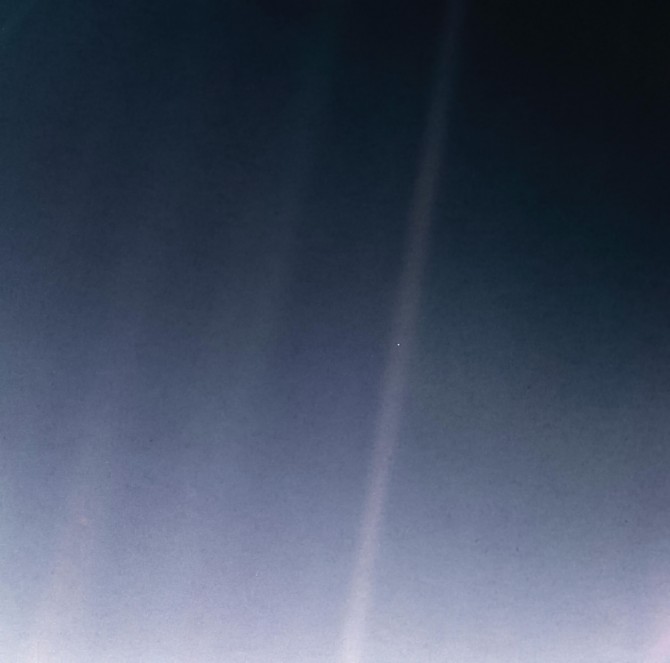
The iconic “pale blue dot” photograph of planet Earth, which was taken Feb. 14, 1990 by NASA’s Voyager 1 spacecraft, from a distance of 3.7 billion miles. Now 30 years later, Voyager 1 is nearly 14 billion miles away.
NASA’s Voyager 1 launched on Sept. 5, 1977, to explore the solar system and beyond. The spacecraft flew past Jupiter on March 5, 1979, and by Saturn on Nov. 12, 1980. A decade later, it was time for a solar system family portrait.
Sagan, part of Voyager’s imaging team, is credited with the idea of having Voyager 1 take images of Earth and its sibling planets. Sagan knew the picture would render Earth as just a dot of light, but as stated on the NASA website, the Voyager team “wanted humanity to see Earth’s vulnerability and that our home world is just a tiny, fragile speck in the cosmic ocean.”
On Feb. 13, 1990, NASA and Jet Propulsion Laboratory engineers sent commands to Voyager 1 to face Earth in order to get the photo. A day later, three Earth-as-a-dot images were taken – then NASA shut down Voyager 1’s camera permanently, to conserve energy for the rest of its decadeslong mission.
Downloading the images took several weeks: The final download occurred May 1, 1990, via NASA’s Deep Space Network.
As of Feb. 14, the elapsed mission time for the Voyager 1 spacecraft is 42 years, five months and 10 days. The craft is about 13.8 billion miles from Earth and traveling at 38,000 miles per hour. NASA and the JPL still keeps tabs on it; the next check will be Feb. 16.
“Look again at that dot. That’s here. That’s home. That’s us. On it, everyone you love, everyone you know, everyone you ever heard of, every human being who ever was, lived out their lives.” Carl Sagan and Ann Druyan
In addition to conceptualizing the famed photo, Sagan was one of the creators of the Golden Record – a 12-inch, gold-covered copper disc, carrying an interstellar message – aboard Voyager 1 and the spacecraft’s sibling, Voyager 2. Ann Druyan, Sagan’s widow and a Peabody and Emmy award-winning writer and producer, served as creative director of Voyager’s Interstellar Message.
In their 1994 book, “Pale Blue Dot: A Vision of the Human Future in Space,” Druyan and Sagan took a poetic and holistic view of Earth – as a tiny speck, a pixel – in the famed photo.
“Look again at that dot,” they wrote. “That’s here. That’s home. That’s us. On it, everyone you love, everyone you know, everyone you ever heard of, every human being who ever was, lived out their lives. The aggregate of our joy and suffering, thousands of confident religions, ideologies and economic doctrines, every hunter and forager, every hero and coward, every creator and destroyer of civilization, every king and peasant, every young couple in love, every mother and father, hopeful child, inventor and explorer, every teacher of morals, every corrupt politician, every ‘superstar,’ every ‘supreme leader,’ every saint and sinner in the history of our species lived there – on a mote of dust, suspended in a sunbeam.”
30 years ago, Carl Sagan requested the Voyager 1 spacecraft take one last picture of Earth. This is the legacy of the Pale Blue Dot.
Media Contact
Get Cornell news delivered right to your inbox.
You might also like

Gallery Heading
Voyager Image Gallery
45 years of voyager i and ii.
Launched in 1977, NASA’s twin Voyager spacecraft inspired the world with pioneering visits to Jupiter, Saturn, Uranus, and Neptune. Their journey continues 45 years later as both probes explore interstellar space, the region outside the protective heliosphere created by our Sun. Researchers – some younger than the spacecraft – are now using Voyager data to solve mysteries of our solar system and beyond.

This archival photo shows engineers working on vibration acoustics and pyro shock testing of NASA’s Voyager on Nov. 18, 1976.

NASA’s Voyager 1 acquired this image of a volcanic explosion on Io on March 4, 1979, about 11 hours before the spacecraft’s closest approach to the moon of Jupiter.

This updated version of the iconic "Pale Blue Dot" image taken by the Voyager 1 spacecraft uses modern image-processing software and techniques to revisit the well-known Voyager view while attempting to respect the original data and intent of those who planned the images.

This illustrated graphic was made to mark Voyager 1’s entry into interstellar space in 2012. It puts solar system distances in perspective, with the scale bar in astronomical units and each set distance beyond 1 AU (the average distance between the Sun and Earth) representing 10 times the previous distance.

This graphic highlights some of the Voyager mission’s key accomplishments. Credit: NASA/JPL-Caltech Full image details

This graphic provides some of the mission’s key statistics from 2018, when NASA’s Voyager 2 probe exited the heliosphere. Credit: NASA/JPL-Caltech Full image details

Suggested Searches
- Climate Change
- Expedition 64
- Mars perseverance
- SpaceX Crew-2
- International Space Station
- View All Topics A-Z
Humans in Space
Earth & climate, the solar system, the universe, aeronautics, learning resources, news & events.

NASA Mission Flies Over Arctic to Study Sea Ice Melt Causes
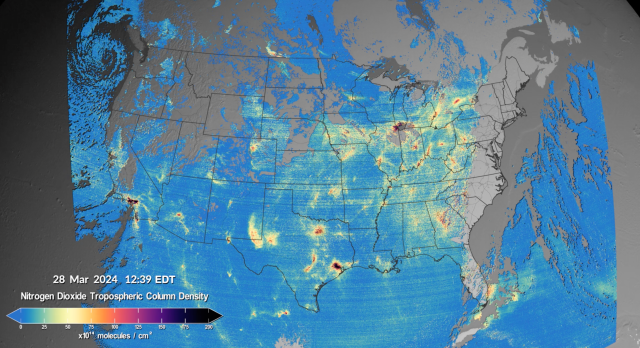
NASA Releases New High-Quality, Near Real-Time Air Quality Data

Twin NASA Satellites Ready to Help Gauge Earth’s Energy Balance
- Search All NASA Missions
- A to Z List of Missions
- Upcoming Launches and Landings
- Spaceships and Rockets
- Communicating with Missions
- James Webb Space Telescope
- Hubble Space Telescope
- Why Go to Space
- Astronauts Home
- Commercial Space
- Destinations
- Living in Space
- Explore Earth Science
- Earth, Our Planet
- Earth Science in Action
- Earth Multimedia
- Earth Science Researchers
- Pluto & Dwarf Planets
- Asteroids, Comets & Meteors
- The Kuiper Belt
- The Oort Cloud
- Skywatching
- The Search for Life in the Universe
- Black Holes
- The Big Bang
- Dark Energy & Dark Matter
- Earth Science
- Planetary Science
- Astrophysics & Space Science
- The Sun & Heliophysics
- Biological & Physical Sciences
- Lunar Science
- Citizen Science
- Astromaterials
- Aeronautics Research
- Human Space Travel Research
- Science in the Air
- NASA Aircraft
- Flight Innovation
- Supersonic Flight
- Air Traffic Solutions
- Green Aviation Tech
- Drones & You
- Technology Transfer & Spinoffs
- Space Travel Technology
- Technology Living in Space
- Manufacturing and Materials
- Science Instruments
- For Kids and Students
- For Educators
- For Colleges and Universities
- For Professionals
- Science for Everyone
- Requests for Exhibits, Artifacts, or Speakers
- STEM Engagement at NASA
- NASA's Impacts
- Centers and Facilities
- Directorates
- Organizations
- People of NASA
- Internships
- Our History
- Doing Business with NASA
- Get Involved
- Aeronáutica
- Ciencias Terrestres
- Sistema Solar
- All NASA News
- Video Series on NASA+
- Newsletters
- Social Media
- Media Resources
- Upcoming Launches & Landings
- Virtual Events
- Sounds and Ringtones
- Interactives
- STEM Multimedia

Former Astronaut David R. Scott

NASA’s Hubble Temporarily Pauses Science

Space Station Research Advances NASA’s Plans to Explore the Moon, Mars

Welcome Back to Planet Earth, Expedition 70 Crew!

Ongoing Venus Volcanic Activity Discovered With NASA’s Magellan Data

Solid State Quantum Magnetometers—Seeking out water worlds from the quantum world

C.12 Planetary Instrument Concepts for the Advancement of Solar System Observations POC Change
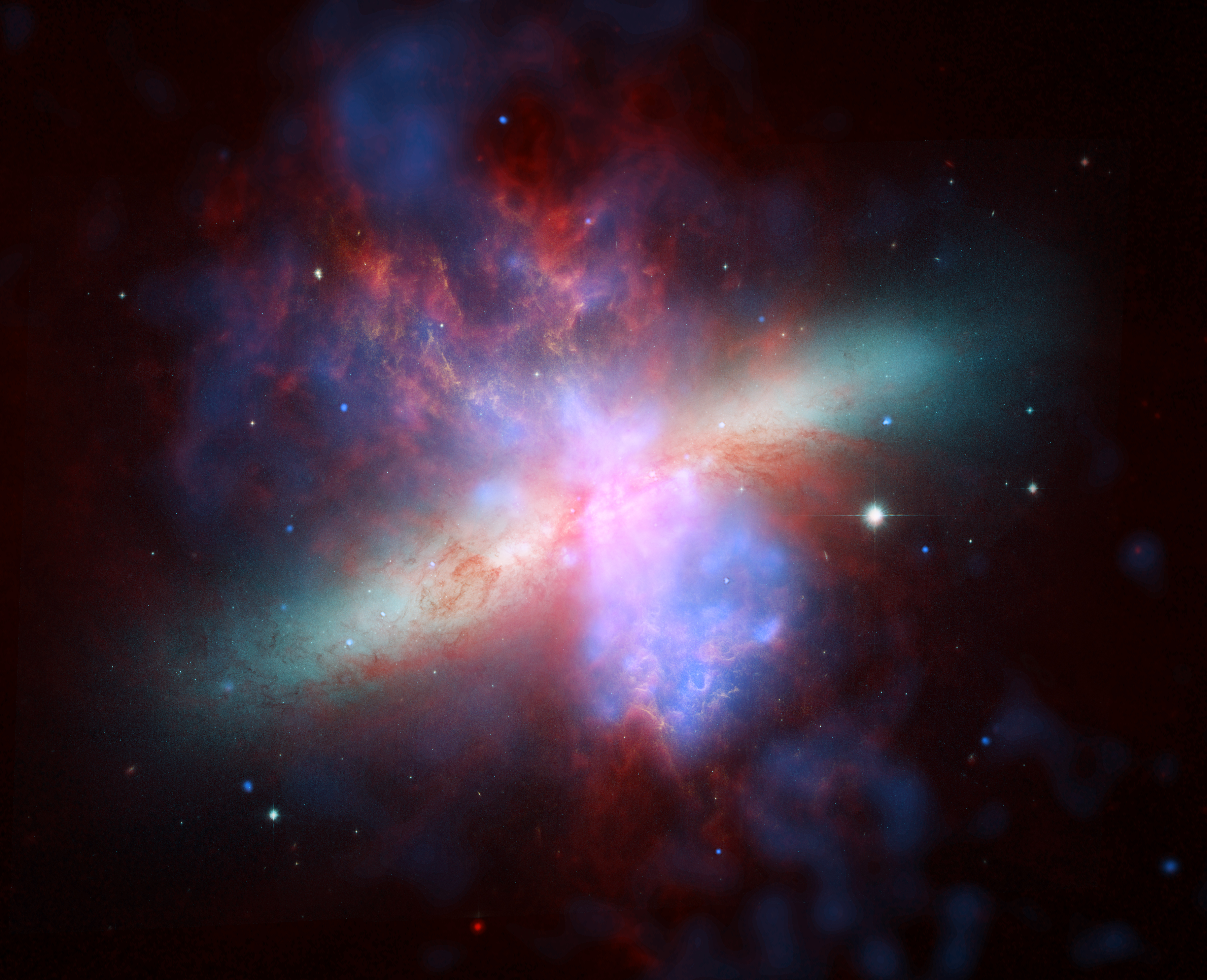
June’s Night Sky Notes: Constant Companions: Circumpolar Constellations, Part III
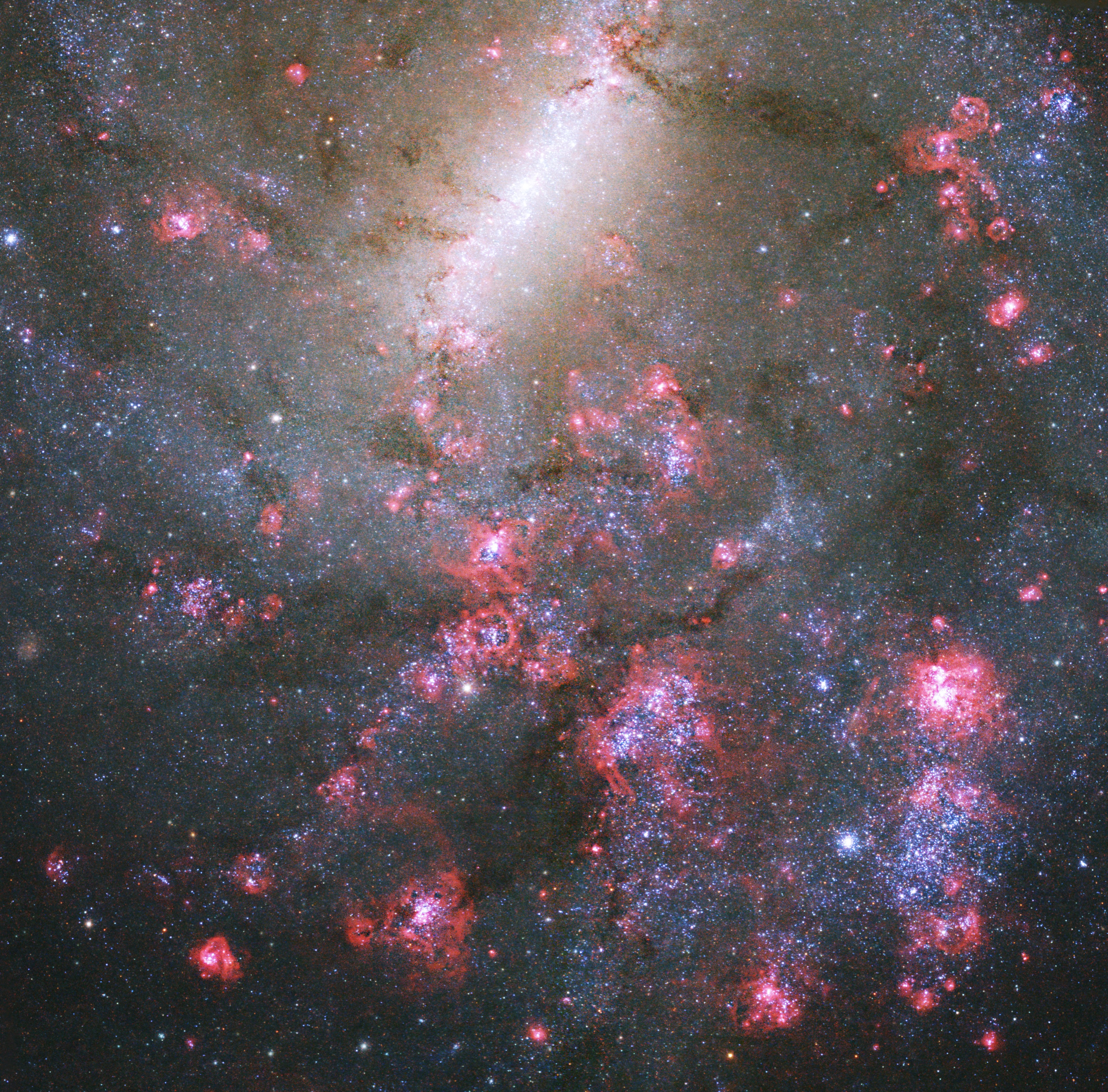
Hubble Views the Lights of a Galactic Bar
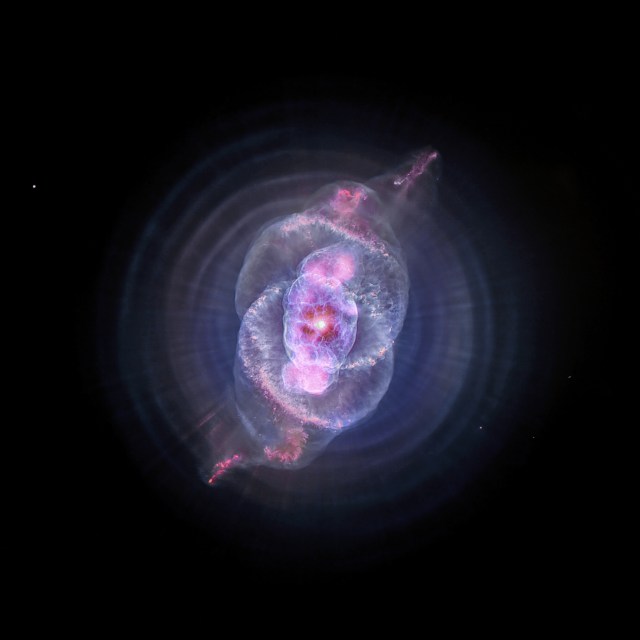
Travel Through Data From Space in New 3D Instagram Experiences

Winners Announced in Gateways to Blue Skies Aeronautics Competition

NASA, Industry to Start Designing More Sustainable Jet Engine Core

Aviary: A New NASA Software Platform for Aircraft Modelling

Tech Today: Measuring the Buzz, Hum, and Rattle

NASA to Measure Moonquakes With Help From InSight Mars Mission

NASA Around the World: Interns Teach Virtual Lessons in Kenya

The Moon and Amaey Shah

NASA Stennis Helps Family Build a Generational Legacy

Diez maneras en que los estudiantes pueden prepararse para ser astronautas

Astronauta de la NASA Marcos Berríos

Resultados científicos revolucionarios en la estación espacial de 2023
40 years ago: voyager 1 explores saturn, johnson space center.
Today, Voyager 1 is the most distant spacecraft from Earth, more than 14 billion miles away and continuing on its journey out of our solar system. Forty years ago, it made its closest approach to Saturn. Although it was not the first to explore the giant ringed planet, as the Pioneer 11 spacecraft completed the first flyby in 1979, Voyager carried sophisticated instruments to conduct more in-depth investigations. NASA’s Jet Propulsion Laboratory in Southern California managed the two Voyager spacecraft launched in 1977 to explore Jupiter and Saturn. Voyager 2 went on to investigate Uranus and Neptune as well, taking advantage of a rare planetary alignment that occurs once every 175 years that enabled the spacecraft to use the gravity of one planet to redirect it to the next.
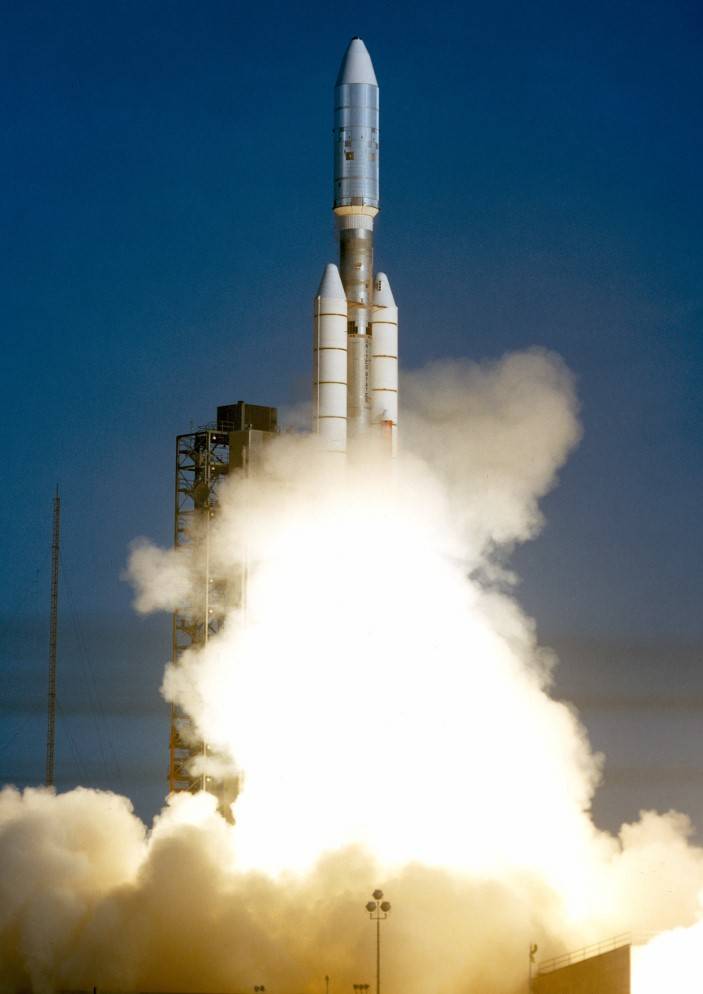
To carry out its studies during the planetary encounters as well as while cruising through interplanetary space, Voyager 1 carried a suite of 11 instruments, including:
- an imaging science system consisting of narrow-angle and wide-angle cameras to photograph the planets and their satellites;
- a radio science system to determine the planets’ physical properties;
- an infrared interferometer spectrometer to investigate local and global energy balance and atmospheric composition;
- an ultraviolet spectrometer to measure atmospheric properties;
- a magnetometer to analyze the planets’ magnetic fields and interactions with the solar wind;
- a plasma spectrometer to investigate microscopic properties of plasma ions;
- a low energy charged particle device to measure fluxes and distributions of ions;
- a cosmic ray detection system to determine the origin and behavior of cosmic radiation;
- a planetary radio astronomy investigation to study radio emissions from Jupiter;
- a photopolarimeter to measure the planets’ surface compositions; and
- a plasma wave system to study the planets’ magnetospheres.
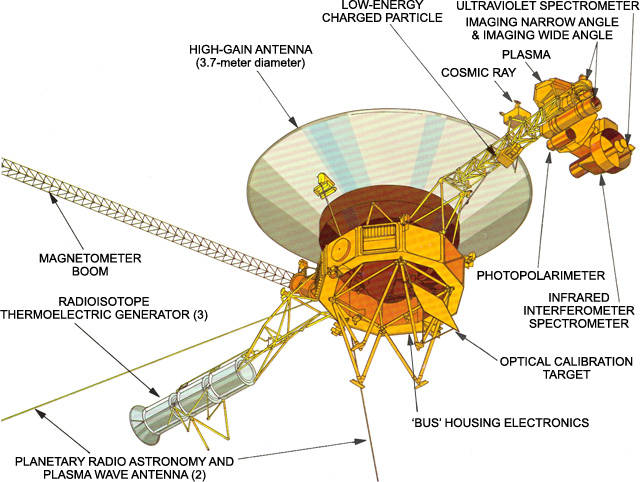
Two weeks after its launch from the Cape Canaveral Air Force Station in Florida on Sep. 5, 1977, Voyager 1 turned its cameras back toward its home planet and took the first single-frame image of the Earth-Moon system, providing a taste of future discoveries at the outer planets. The spacecraft crossed the asteroid belt without incident between Dec. 10, 1977, and Sep. 8, 1978, and flew by Jupiter on March 5, 1979. During the four-month encounter, Voyager 1 returned 19,000 photographs of the giant planet, its four largest satellites, discovered two new moons, and found a thin ring encircling Jupiter. The spacecraft’s instruments recorded a wealth of scientific data that greatly expanded our knowledge of the planet. After a 17-month interplanetary cruise, Voyager 1 began its Saturn observations on Aug. 22, 1980, still 68 million miles from the planet. Because of its interest to scientists, mission planners chose the spacecraft’s trajectory to make a close flyby of Saturn’s largest moon Titan, the only planetary satellite with a dense atmosphere, just before the closest approach to the planet itself. This trajectory meant that Voyager 1 would pass over Saturn’s south pole and the gravity assist would send it out of the ecliptic, the plane where the solar system’s planets reside, thus precluding further planetary encounters.
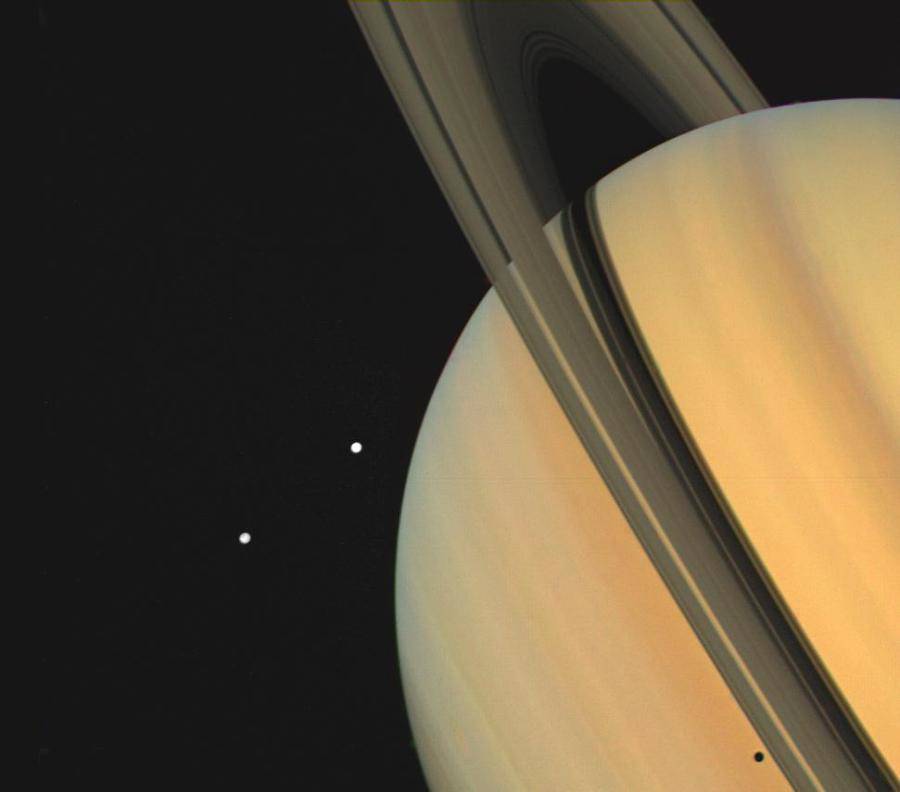
During its approach to Saturn, Voyager 1 returned spectacular images of the planet and ever-more detailed photographs of its rings. These revealed structural features of the various rings, indicating distinctive compositions of each, in particular with regard to particle size. The broad rings easily identifiable from Earth were seen to be composed of thousands of smaller ringlets. Observations of the outer F-ring, discovered by Pioneer 11 the previous year, showed it to have a braided pattern, its small particles perturbed by two newly discovered co-orbiting shepherd moons. Images of Saturn’s atmosphere showed it to be more dynamic than previously expected. Voyager’s instruments indicated that the planet’s atmosphere is composed mainly of hydrogen, with about 11% helium and traces of other gases. The spacecraft observed wind velocities of up 1,100 miles per hour and precisely measured the planet’s rotation at 10 hours and 39.4 minutes.
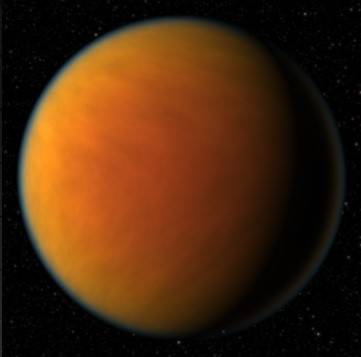
On Nov. 12, about 18 hours before making its closest encounter with Saturn, Voyager 1 turned its attention to one of the high-priority science targets of the encounter, Titan, passing within 4,034 miles of the planet’s largest moon. The spacecraft’s cameras observed an orange haze obscuring the planet’s surface, with detached haze layers up to 300 miles above the thicker atmosphere. The instruments measured the atmospheric composition at the surface as mostly nitrogen with about 10% methane and traces of hydrocarbons, the pressure at the surface 60% greater than Earth’s mean sea level pressure, and surface temperatures around 93 K (-293 degrees Fahrenheit). Voyager 1 measured Titan’s diameter at 3,194 miles and determined its density indicated a composition of roughly equal proportions of rock and water ice. The spacecraft then made its closest approach of 78,000 miles to Saturn’s cloud tops, swung behind the planet, and began its outbound journey. Saturn’s gravity imparted enough acceleration on Voyager 1 that it achieved escape velocity from the solar system.
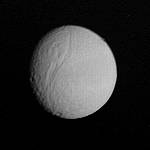
Voyager 1 studied many of Saturn’s smaller icy moons during the encounter and discovered three new ones, bringing the total number of known satellites at the time to 15. In order of study during the encounter and the closest distance to the spacecraft, these moons were: Tethys (258,340 miles), Mimas (54,965 miles), Enceladus (125,570 miles), Dione (100,000 miles), Rhea (45,980 miles), and Hyperion (547,200 miles). These moons range in size from 950 miles in diameter for Rhea to 180-mile-wide Hyperion. Voyager also observed 900-mile-wide outer icy moon Iapetus from a distance of 1.5 million miles. These moons are composed of a mixture of ice and rock, and most show heavily cratered surfaces with the exception of Enceladus. Iapetus displays two very different hemispheres, a dark leading side, and a much brighter trailing side, while the unique surface feature on Mimas is a large crater one-third the diameter of the moon itself.
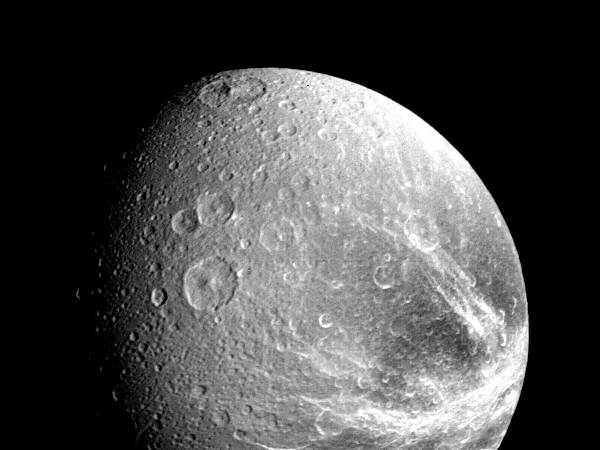
Four days after its closest approach, the spacecraft took a magnificent image of Saturn and its rings from a perspective never seen from Earth, the planet in a crescent phase with its night side dimly illuminated by ring-shine, sunlight reflected from the rings. Voyager 1 completed its observations of the Saturn system on Dec. 14, 1980.
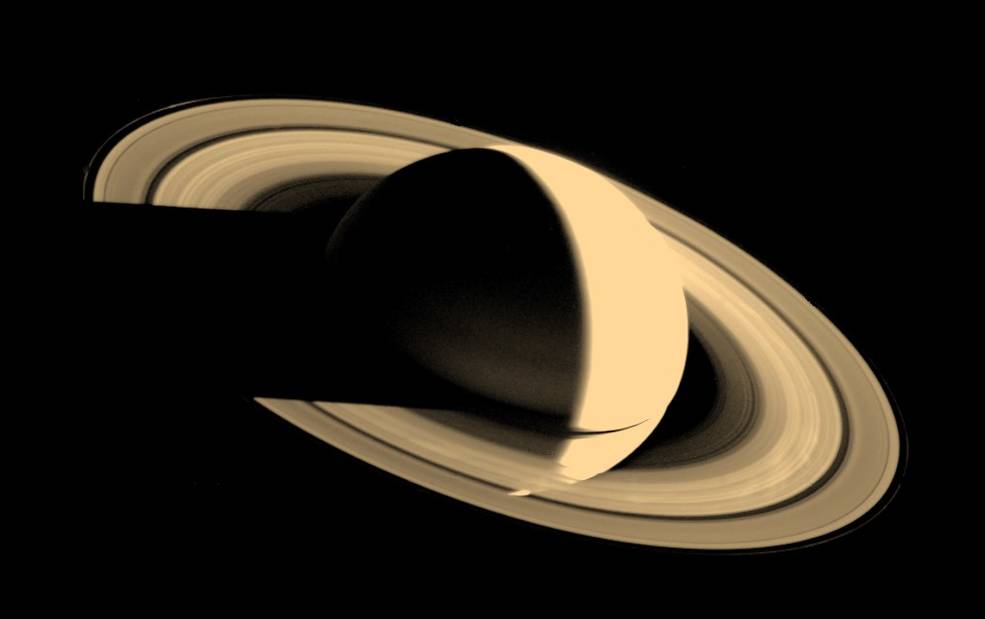
On Feb. 14, 1990, more than 12 years after it began its journey from Earth and shortly before its cameras were permanently turned off to conserve power, Voyager 1 spun around and pointed them back into the solar system. In a mosaic of 60 images, it captured a “family portrait” of six of the solar system’s planets, including a pale blue dot called Earth more than 3.7 billion miles away. Fittingly, these were the last pictures returned from either Voyager spacecraft. In February 2020, to commemorate the photograph’s 30th anniversary, NASA released a remastered version of the image of Earth as Pale Blue Dot Revisited .

In August 2012, the spacecraft passed beyond the heliopause, the boundary between the heliosphere, the bubble-like region of space created by the Sun, and the interstellar medium. Now, more than 43 years after its launch, several of Voyager 1’s instruments are still returning useful data about conditions beyond the solar system. Engineers expect that Voyager 1 will continue to return data from interstellar space until about 2025 when it will no longer be able to power its instruments. Just in case an alien intelligence should find it one day, Voyager 1 and its twin carry gold-plated records that contain information about its home planet, including recordings of terrestrial sounds, music, and greetings in 55 languages. Instructions on how to play the record are also included.
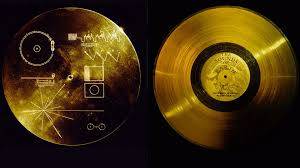
- Become A Member
- Gift Membership
- Kids Membership
- Other Ways to Give
- Explore Worlds
- Defend Earth
How We Work
- Education & Public Outreach
- Space Policy & Advocacy
- Science & Technology
- Global Collaboration
Our Results
Learn how our members and community are changing the worlds.
Our citizen-funded spacecraft successfully demonstrated solar sailing for CubeSats.
Space Topics
- Planets & Other Worlds
- Space Missions
- Space Policy
- Planetary Radio
- Space Images
The Planetary Report
The eclipse issue.
Science and splendor under the shadow.
Get Involved
Membership programs for explorers of all ages.
Get updates and weekly tools to learn, share, and advocate for space exploration.
Volunteer as a space advocate.
Support Our Mission
- Renew Membership
- Society Projects
The Planetary Fund
Accelerate progress in our three core enterprises — Explore Worlds, Find Life, and Defend Earth. You can support the entire fund, or designate a core enterprise of your choice.
- Strategic Framework
- News & Press
The Planetary Society
Know the cosmos and our place within it.
Our Mission
Empowering the world's citizens to advance space science and exploration.
- Explore Space
- Take Action
- Member Community
- Account Center
- “Exploration is in our nature.” - Carl Sagan
Emily Lakdawalla & Charlene Anderson • Feb 12, 2010
Twenty years since Voyager's last view
On Sunday comes the twentieth anniversary of an iconic image from the Voyager mission: the "Pale Blue Dot" photo of Earth caught in a sunbeam, which was captured by Voyager 1 as part of a Solar System Family Portrait. This panoramic view of our planetary cradle wouldn't have happened without years of advocacy by Planetary Society founder Carl Sagan, whose vision still inspires our organization.
Nothing like it has been done since. There hasn't been the opportunity -- Voyager 1 is the last spacecraft to have departed the solar system with a functional camera. The next one to be in a similar position will be New Horizons . I asked Alan Stern whether the Pluto-bound craft will take a family portrait from its distant perspective. He told me "Absolutely! But because of the bright Sun, we have to be careful for now, so we can't do it until after Pluto. We can however (and soon will-- this summer!) look back to Jupiter and see it and the Galilean satellites from 2+ billion km away near the orbit of Uranus. It should be quite evocative." Indeed it will.
There are several retrospectives on Voyager's solar system family portrait being posted across the Internet today, including this one from JPL and this really neat story from National Public Radio , featuring an interview of Candy Hansen, who was apparently the first person to spot Earth fixed in that sunbeam. Here's one written by the Society's Charlene Anderson a few years ago, on the occasion of the 25th anniversary of the Voyagers' launches.
by Charlene Anderson
This article is reprinted from the September/October 2002 issue of The Planetary Report.
Home. Family. This will be Voyager's enduring legacy: It has changed forever the feelings raised by those words. Through its robotic eyes we have learned to see the solar system as our home. Through its portraits of the planets we know that they are part of our family.
Apollo astronauts showed us a tiny Earth alone in the blackness of space. Now, with these images, Voyager has shown us that Earth is not really alone. Around our parent Sun orbit sibling worlds, companions as we travel through the Galaxy.
These family portraits of the Sun and planets were Voyager's final photographic assignment. Planetary Society President and Voyager Imaging Team member Carl Sagan worked for a decade to get these pictures taken. Between the two Voyager spacecraft, they returned some 67,000 images of the four outer planets and their 56 known moons. Voyager 1 had the slightly easier assignment: It encountered Jupiter in March 1979 and swung by Saturn in November 1980. Then it headed out in search of the heliopause, the edge of our Sun's sphere of magnetic influence, and where the solar wind gives way to the wind from the stars. In August 1989 Voyager 2 flew by Neptune, completing its reconnaissance mission, having visited Jupiter in 1979, Saturn in 1981 and Uranus in 1986. After passing Neptune, Voyager 2 joined its twin on the way to interstellar space.
The Voyagers had been launched in 1977 to take advantage of a planetary alignment that occurs only once every 176 years. The outer planets were lined up so that a spacecraft could swing from one to another, threading its way past the 4 gas giants in only 12 years. Mission planners at the Jet Propulsion Laboratory could select their paths from among many possible trajectories and targets.
For Voyager 1, they chose to send the spacecraft close by Titan's south pole to obtain close-up data on Saturn's largest moon. Titan's thick nitrogen atmosphere proved to be heavy with complex, carbon-rich organic molecules, and its surface is possibly dotted with lakes of liquid hydrocarbons. For carbon-based lifeforms living in a primarily nitrogen atmosphere - such as ourselves - a world like Titan is well worth a close look.
But to fly close to Titan, the project team had to sacrifice Voyager 1's encounters with Uranus and Neptune or a close-up look at Pluto. Its path around Saturn swung the spacecraft up and out of the ecliptic, the plane defined by Earth's orbit about the Sun. Looking from its Pasadena home on Earth's northern hemisphere, the spacecraft now appears to be coasting above our solar system.
Voyager 1 was chosen to take the family portrait because fewer instruments might be damaged by looking back toward the Sun. And, to Voyager 2, now beyond Neptune and traveling much closer to the ecliptic, Jupiter was too close to the Sun to be picked up by the spacecraft's cameras.
So on February 14 - Valentine's Day 1990 - Voyager 1 aimed its cameras at a string of small colored dots clustered just to the right of the constellation Orion - the Hunter. The spacecraft was then 32 degrees above the ecliptic and nearly 6 billion kilometers (3.7 billion miles) from the Sun. It took 39 wide-angle views and 21 narrow-angle images. The narrow-angle camera, with a lens resembling a telephoto, took three consecutive images through colored filters of seven of the nine planets. This enabled image processors at the Jet Propulsion Laboratory to construct the colored portraits of the planets seen on pages 16 and 17. The Multi-Mission Image Processing Laboratory then pasted together the wide-angle images into the mosaic on the next page.
Voyager had produced the first portrait ever of our Sun and planets together.
But like shy family members at a holiday gathering, the smallest planets avoided having their pictures taken. Mars and Mercury were lost in the glare of the Sun. The outermost planet, Pluto, was too tiny and far away. So this family portrait is incomplete. The next generation of spacecraft will be unable to take another family portrait. Magellan and Galileo, and the planned missions, such as the Soviets' Mars '94 and NASA's Mars Observer and Comet Rendezvous/Asteroid Flyby, plus the joint NASA/European Space Agency Cassini mission, will be locked in orbit about their target planets. None of these will ever gain a perspective from which they could see the solar system as Voyager did.
Voyager alone could look homeward and capture our family of planets as they looked on February 15, 1990. Voyager alone could so graphically show us how Earth and the planets are inextricably linked to our parent Sun.
Home is now a corner of space brightened by a small yellow star. Family is now a company of planets circling that star together. Our home and family now encompass an entire solar system.
Thank you, Voyager.
Your support powers our mission to explore worlds, find life, and defend Earth. Give today!
For full functionality of this site it is necessary to enable JavaScript. Here are instructions on how to enable JavaScript in your web browser .
NASA's Voyager probes have been traveling through space for nearly 46 years. Here are 18 groundbreaking photos from their incredible mission.
- Nearly 46 years after their launch, Voyager 1 and 2 will likely soon reach the end of their scientific mission .
- NASA recently lost contact with Voyager 2 after sending it a bad command by mistake.
- Here are 18 pictures the probes took over the course of their forty-plus-year journey.

The Voyager probes are pioneers of science, making it farther into space than any other manufactured object. But now, they face a terminal problem: their power is running out.
The twin probes were originally sent on a four-year mission to tour the solar system, but they exceeded all expectations and are still going nearly 46 years later. That makes them NASA's longest-lived mission.
Scientists are now doing their best to keep the probes going for as long as possible. They recently found a clever hack to extend Voyager 2's life for another three years and plan to do the same with Voyager 1.
But these are old machines and NASA is constantly scrambling to fix mistakes. Last year, Voyager 1 started sending garbled data from the outside of the solar system. NASA ultimately figured out one of its computers had gone dead.
Voyager 2 is now in limbo , as the agency revealed Friday it had lost contact with the probe when someone sent a wrong command. It could be the end of Voyager 2's mission if NASA can't fix the mistake, which the agency probably won't be able to do before October.
As the probes are nearing the end of their scientific mission, here are 18 images from Voyager that changed science.

The Voyager probes were designed to visit Jupiter and Saturn.
The Voyager mission included two probes — Voyager 1 and Voyager 2 — which NASA launched in 1977 within a few months of each other.
NASA took advantage of a rare planet alignment to turbocharge their journeys into space.
NASA originally built the probes to last five years, but they have exceeded that lifespan many times .
As of August 20 and September 5, 2023, Voyager 2 and Voyager 1 will have been traveling for 46 years, respectively.
This is what Voyager 1 saw on its approach to Jupiter.
Voyager 1 and Voyager 2 reached Jupiter in 1979.
As they flew by the planet, they took about 50,000 pictures of Jupiter. These blew away scientists, as the quality of the pictures was much better than those taken from Earth, according to NASA.
These snaps taught scientists important facts about the planet's atmosphere, magnetic forces, and geology that would have been difficult to decipher otherwise.
The probes discovered two new moons orbiting Jupiter: Thebe and Metis.
They also spotted a thin ring around Jupiter.
The probe captured this picture as it was looking back at the planet backlit by the Sun.
Voyager 1 discovered volcanoes at the surface of Io, one of Jupiter's moons.
Next stop: Saturn.
In 1980 and 1981, the probes reached Saturn . The flyby gave scientists unprecedented insight into the planet's ring structure, atmosphere, and moons.
Voyager snapped Saturn's rings in more detail than ever before.
And showed every secret that Enceladus, Saturn's moon, had to offer.
Saturn, snapped as the probe flew away, was shown in a new light.
By 1986, Voyager 2 had made it to Uranus.
By 1986, Voyager 1 has finished its grand tour of the solar system, and few out towards space. But Voyager 2 kept on its exploring our nearest planets, passing 50,600 miles away from Uranus in January 1986.
Voyager 2 discovered two extra rings around Uranus , revealing the planet had at least 11, not 9.
Voyager 2 also spotted 11 previously unseen moons around Uranus.
Here is a picture of Miranda, Uranus's sixth-biggest moon.
Voyager 2 was the first spacecraft to observe Neptune from a close distance.
In 1989, 12 years after its launch, Voyager 2 passed within 3,000 miles of Neptune.
Here's Nepture taken by Voyager 2, in all its blue glory.
Voyager 2 took this unflattering pic of Triton's rough face.
It captured Triton, Neptune's moon in unprecedented detail.
And snapped Triton's southern hemisphere.
As it flew by, Voyager 2 uncovered Neptune's rings.
As its parting gift, Voyager 2 took this beautiful picture of light grazing Neptune's south pole.
This is Voyager 2's last picture. Since it wouldn't come across another planet on its ongoing journey, NASA switched off its cameras after its flyby of Neptune to conserve energy for other instruments.
Voyager 1 had one last trick up its sleeve.
As its last photographic hurrah in 1990, Voyager 1 took 60 images of the solar system from 4 billion miles away.
It gave us the Earth's longest selfie, dubbed the "pale blue dot."
This remains the longest-range selfie: a portrait of the Earth taken by a human-made probe from 4 billion miles away.
After this picture, NASA switched off Voyager 1's cameras to save energy. NASA could switch the probes' cameras back on , but it is not a priority for the mission.
Beyond the solar system
Though the probes are no longer sending pictures, they haven't stopped sending crucial information about space.
In 2012, Voyager 1 became the first human-made instrument to cross into interstellar space by crossing the boundary between our solar system and the rest of the universe, called the heliopause.
Voyager 2 was second, crossing that threshold in 2018 . The probe revealed that there was yet another layer outside of our heliosphere.
The probes keep sending back measurements from interstellar space, like weird hums likely coming from vibrations made by neighboring stars.
Even after their instruments are switched off, the probes' mission continues.
NASA is planning to switch more of the probes' instruments in the hope of extending their life to the 2030s.
But even after all their instruments become quiet, their mission will carry on. As they drift off, they will still be carrying a golden record that carries crucial information about humanity. If intelligent extraterrestrial life exists, they could use that information to reach out to us.
This article was originally published on June 6, 2022, and is being updated with the latest developments about Voyager 1 and 2.
- Main content
- History Classics
- Your Profile
- Find History on Facebook (Opens in a new window)
- Find History on Twitter (Opens in a new window)
- Find History on YouTube (Opens in a new window)
- Find History on Instagram (Opens in a new window)
- Find History on TikTok (Opens in a new window)
- This Day In History
- History Podcasts
- History Vault
This Day In History : February 14
Changing the day will navigate the page to that given day in history. You can navigate days by using left and right arrows
“Pale Blue Dot” photo of Earth is taken

On Valentine's Day, 1990, 3.7 billion miles away from the sun, the Voyager 1 spacecraft takes a photograph of Earth. The picture, known as Pale Blue Dot , depicts our planet as a nearly indiscernible speck roughly the size of a pixel.
Launched on September 5, 1977, Voyagers 1 and 2 were charged with exploring the outer reaches of our solar system. It passed by Jupiter in March of 1979 and Saturn the following year. The gaps between the outer planets are so vast that it was another decade before it passed by Neptune and arrived at the spot where it was to take a series of images of the planets, known as the "Family Portrait" of our solar system.
Of the Family Portrait series, Pale Blue Dot was certainly the most memorable. The furthest image ever taken of Earth, it lent its name to popular astronomer Carl Sagan's 1994 book. Sagan, who advised the Voyager mission and had suggested the photo, wrote the following: "Look again at that dot. That's here. That's home. That's us. On it everyone you love, everyone you know, everyone you ever heard of, every human being who ever was, lived out their lives. The aggregate of our joy and suffering, thousands of confident religions, ideologies, and economic doctrines, every hunter and forager, every hero and coward, every creator and destroyer of civilization, every king and peasant, every young couple in love, every mother and father, hopeful child, inventor and explorer, every teacher of morals, every corrupt politician, every "superstar," every "supreme leader," every saint and sinner in the history of our species lived there—on a mote of dust suspended in a sunbeam."
Voyager 1's journey continues. In 1998, it became the most distant human-made object in space, and on August 25, 2012, it left the furthest reaches of the sun's magnetic field and solar winds, becoming the first man-made object in interstellar space.
Also on This Day in History February | 14
Frederick douglass is born, noam chomsky publishes his groundbreaking book "syntactic structures", iran's ayatollah khomeini calls on muslims to kill salman rushdie, author of "the satanic verses".
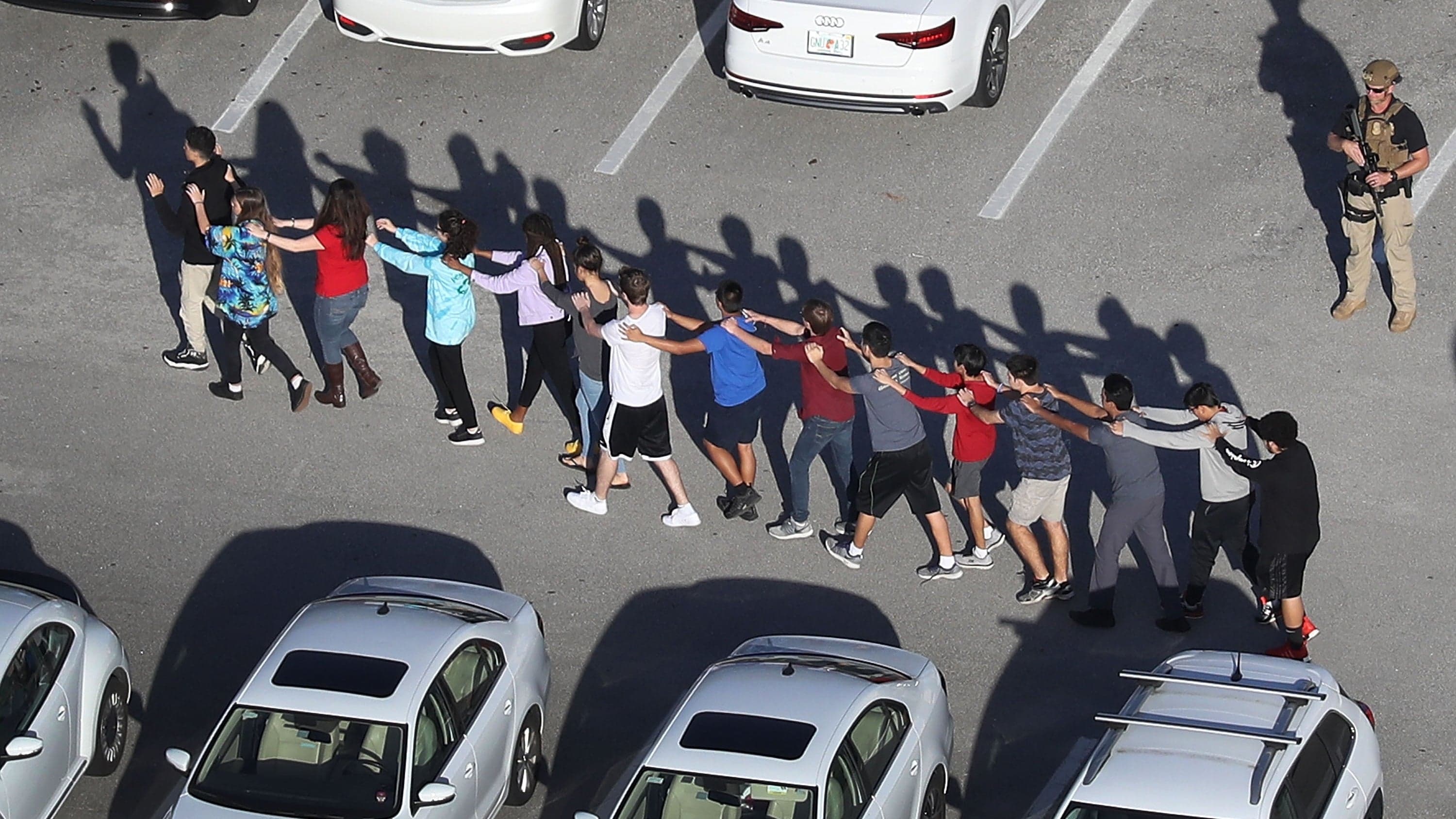
Teen gunman kills 17, injures 17 at Parkland, Florida high school

This Day in History Video: What Happened on February 14
Captain cook killed in hawaii.

Wake Up to This Day in History
Sign up now to learn about This Day in History straight from your inbox. Get all of today's events in just one email featuring a range of topics.
By submitting your information, you agree to receive emails from HISTORY and A+E Networks. You can opt out at any time. You must be 16 years or older and a resident of the United States.
More details : Privacy Notice | Terms of Use | Contact Us

St. Valentine beheaded
Olympic speed skater dan jansen falls after sister dies, theodore roosevelt’s wife and mother die, first trainload of oranges leaves los angeles, lillian hellman sues mary mccarthy for libel, the st. valentine’s day massacre, ussr and prc sign mutual defense treaty, sandinistas agree to free elections, patriots defeat loyalists at kettle creek.

- The Contents
- The Making of
- Where Are They Now
- Frequently Asked Questions
- Q & A with Ed Stone
golden record
Where are they now.
- frequently asked questions
- Q&A with Ed Stone
Mission Status
Instrument status.

Where are the Voyagers now?
To learn more about Voyager, zoom in and give the spacecraft a spin. View the full interactive experience at Eyes on the Solar System . Credit: NASA/JPL-Caltech
View Voyager
Space Flight Operations Schedule (SFOS)
SFOS files showing Voyager activity on Deep Space Network (DSN)
2024 Tracking Schedule
2023 tracking schedule, 2022 tracking schedule, 2021 tracking schedule, 2020 tracking schedule, 2019 tracking schedule, 2018 tracking schedule, 2017 tracking schedule, 2016 tracking schedule, 2015 tracking schedule, 2014 tracking schedule, 2013 tracking schedule, 2012 tracking schedule, 2011 tracking schedule, 2010 tracking schedule, 2009 tracking schedule, 2008 tracking schedule, 2007 tracking schedule, 2006 tracking schedule, 2005 tracking schedule, 2004 tracking schedule, 2003 tracking schedule, 2002 tracking schedule, 2001 tracking schedule, 2000 tracking schedule, 1999 tracking schedule, 1998 tracking schedule, 1997 tracking schedule, 1996 tracking schedule, 1995 tracking schedule, 1994 tracking schedule.
Voyager: 15 incredible images of our solar system captured by the twin probes (gallery)
The twin probes have captured some remarkable images of our cosmic neighborhood.

NASA's twin probes Voyager 1 and Voyager 2 have captured some truly remarkable images of our solar system and are currently roaming through interstellar space.
Despite its name Voyager 2 launched before Voyager 1 , when it lifted off from Cape Canaveral Space Launch Complex 41 aboard a Titan IIIE-Centaur on Aug. 20, 1977. Voyager 1 followed suit about two weeks later on Sept. 5.
While Voyager 1 primarily focused on Jupiter and Saturn , Voyager 2 visited both gas giants and then ventured on to Uranus and Neptune . But the duo didn't stop there. Voyager 1 officially entered interstellar space on Aug. 25, 2012, while Voyager 2 entered on Nov. 5, 2018. The pair continue to journey through the cosmos and have enough power and fuel to keep scientific instruments running until at least 2025, according to NASA .
Here we celebrate the achievements of both Voyager 1 and Voyager 2 with some incredible images captured by the pair.
This image was taken when NASA's Voyager 1 spacecraft zoomed toward Jupiter in January and February 1979, capturing hundreds of images during its approach, including this close-up of swirling clouds around Jupiter's Great Red Spot .
This image of the Earth and moon are in a single frame. Voyager was the first spacecraft to achieve this and captured the iconic image on Sept. 18, 1977, by Voyager 1 when it was 7.25 million miles from Earth. The moon is at the top of the picture and beyond the Earth as viewed by Voyager.
Color composite by Voyager 2 showing Jupiter's faint ring system. Images captured in July 1979.
A Voyager 1 image of Jupiter's moon Io showing the active plume of the volcano Loki. The heart-shaped feature southeast of Loki consists of fallout deposits from the active plume Pele. The images that make up this mosaic were taken from an average distance of approximately 340,000 miles (490,000 kilometers) from the moon.
Layers of haze covering Saturn's moon Titan are seen in this image taken by Voyager 1 on Nov. 12, 1980, at a range of 13,700 miles (22,000 km). This false-color image shows the details of the haze that covers Titan. The upper level of the thick aerosol above the moon's limb appears orange.
This view of Uranus was recorded by Voyager 2 on Jan. 25, 1986, as the spacecraft left the planet behind and set forth on the cruise to Neptune. Even at this extreme angle, Uranus retains the pale blue-green color seen by ground-based astronomers and recorded by Voyager during the historic encounter.
This Voyager 2 high-resolution color image provides obvious evidence of vertical relief in Neptune's bright cloud streaks. These clouds were observed at a latitude of 29 degrees north near Neptune's east terminator, the "line" on a planet where daylight meets darkness.
Global color mosaic of Triton , taken in 1989 by Voyager 2 during its flyby of the Neptune system. The color was synthesized by combining high-resolution images taken through orange, violet and ultraviolet filters; these images were displayed as red, green and blue images and combined to create this color version.
Saturn and three of its moons, Tethys, Dione and Rhea, seen by a Voyager spacecraft on Aug. 4, 1982, from a distance of 13 million miles (21 million km).
This narrow-angle color image of the Earth, dubbed the "Pale Blue Dot," is a part of the first ever 'portrait' of the solar system taken by Voyager 1. The spacecraft acquired a total of 60 frames for a mosaic of the solar system from a distance of more than 4 billion miles (6 billion km) from Earth and about 32 degrees above the ecliptic, which is the plane that contains most of the planets of the solar system.
Voyager 1 took photos of Jupiter and two of its satellites (Io, left, and Europa ).
Enhanced color view of Saturn's ring system captured by Voyager 2 on Aug. 17, 1981, at a distance of 5.5 million miles (8.9 million km). The color variations between the rings possibly indicate variations in chemical composition from one part of Saturn's ring system to another.
Close-up of the surface of Jupiter's moon Europa captured by Voyager 2 at a distance of 152,000 miles (246,000 km).
Voyager 2 captured this image of Neptune's rings on Aug. 26, 1989, from a distance of 175,000 miles (280,000 km).
A false-color image of Callisto captured on July 7, 1979, by Voyager 2 at a distance of about 677,000 miles (1.09 million km). Callisto is the second largest moon of Jupiter and is the most heavily cratered of the Galilean satellites.
Daisy Dobrijevic joined Space.com in February 2022 having previously worked for our sister publication All About Space magazine as a staff writer. Before joining us, Daisy completed an editorial internship with the BBC Sky at Night Magazine and worked at the National Space Centre in Leicester, U.K., where she enjoyed communicating space science to the public. In 2021, Daisy completed a PhD in plant physiology and also holds a Master's in Environmental Science, she is currently based in Nottingham, U.K. Daisy is passionate about all things space, with a penchant for solar activity and space weather. She has a strong interest in astrotourism and loves nothing more than a good northern lights chase!
- Mike Wall Senior Space Writer
Russian Progress 88 cargo ship docks at ISS carrying tons of fresh supplies
SpaceX launches 23 Starlink satellites into orbit from Florida in late-night liftoff (video)
Boeing's 1st Starliner astronaut launch aborted minutes before liftoff (video)
Most Popular
- 2 Japanese billionaire cancels private flight around the moon on SpaceX's giant Starship
- 3 Double trouble: Sun unleashes 2 powerful X-class solar flares in 12 hours (video)
- 4 This Week In Space podcast: Episode 113 — China’s Heavenly Dream
- 5 The ISS has a urine pump problem. Boeing's Starliner astronaut launch will flush it out.

The most distant human-made object

No spacecraft has gone farther than NASA's Voyager 1. Launched in 1977 to fly by Jupiter and Saturn, Voyager 1 crossed into interstellar space in August 2012 and continues to collect data.
Mission Type
What is Voyager 1?
Voyager 1 has been exploring our solar system since 1977. The probe is now in interstellar space, the region outside the heliopause, or the bubble of energetic particles and magnetic fields from the Sun. Voyager 1 was launched after Voyager 2, but because of a faster route, it exited the asteroid belt earlier than its twin, and it overtook Voyager 2 on Dec. 15, 1977.
- Voyager 1 was the first spacecraft to cross the heliosphere, the boundary where the influences outside our solar system are stronger than those from our Sun.
- Voyager 1 is the first human-made object to venture into interstellar space.
- Voyager 1 discovered a thin ring around Jupiter and two new Jovian moons: Thebe and Metis.
- At Saturn, Voyager 1 found five new moons and a new ring called the G-ring.
In Depth: Voyager 1
Voyager 1 at jupiter.
Voyager 1 began its Jovian imaging mission in April 1978 at a range of 165 million miles (265 million km) from the planet. Images sent back by January the following year indicated that Jupiter’s atmosphere was more turbulent than during the Pioneer flybys in 1973–1974.
Beginning on January 30, Voyager 1 took a picture every 96 seconds for a span of 100 hours to generate a color timelapse movie to depict 10 rotations of Jupiter. On Feb. 10, 1979, the spacecraft crossed into the Jovian moon system and by early March, it had already discovered a thin (less than 30 kilometers thick) ring circling Jupiter.
Voyager 1’s closest encounter with Jupiter was at 12:05 UT on March 5, 1979 at a range of about 174,000 miles (280,000 km). It encountered several of Jupiter’s Moons, including Amalthea, Io, Europa, Ganymede, and Callisto, returning spectacular photos of their terrain, opening up completely new worlds for planetary scientists.
The most interesting find was on Io, where images showed a bizarre yellow, orange, and brown world with at least eight active volcanoes spewing material into space, making it one of the most (if not the most) geologically active planetary body in the solar system. The presence of active volcanoes suggested that the sulfur and oxygen in Jovian space may be a result of the volcanic plumes from Io which are rich in sulfur dioxide. The spacecraft also discovered two new moons, Thebe and Metis.
Voyager 1 at Saturn
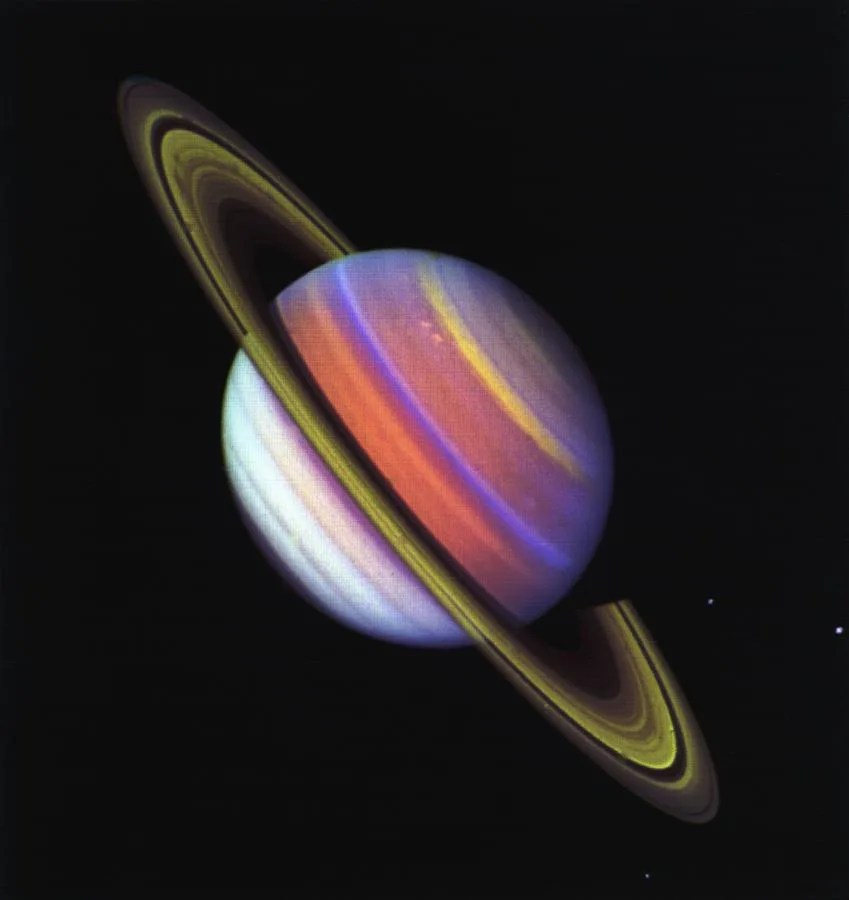
Following the Jupiter encounter, Voyager 1 completed an initial course correction on April 9, 1979 in preparation for its meeting with Saturn. A second correction on Oct. 10, 1979 ensured that the spacecraft would not hit Saturn’s moon Titan.
Its flyby of the Saturn system in November 1979 was as spectacular as its previous encounter. Voyager 1 found five new moons, a ring system consisting of thousands of bands, wedge-shaped transient clouds of tiny particles in the B ring that scientists called “spokes,” a new ring (the “G-ring”), and “shepherding” satellites on either side of the F-ring—satellites that keep the rings well-defined.
During its flyby, the spacecraft photographed Saturn’s moons Titan, Mimas, Enceladus, Tethys, Dione, and Rhea. Based on incoming data, all the moons appeared to be composed largely of water ice. Perhaps the most interesting target was Titan, which Voyager 1 passed at 05:41 UT on November 12 at a range of 2,500 miles (4,000 km). Images showed a thick atmosphere that completely hid the surface. The spacecraft found that the moon’s atmosphere was composed of 90% nitrogen. Pressure ad temperature at the surface was 1.6 atmospheres and 356 °F (–180°C), respectively.
Atmospheric data suggested that Titan might be the first body in the solar system (apart from Earth) where liquid might exist on the surface. In addition, the presence of nitrogen, methane, and more complex hydrocarbons indicated that prebiotic chemical reactions might be possible on Titan.
Voyager 1’s closest approach to Saturn was at 23:46 UT on 12 Nov. 12, 1980 at a range of 78,000 miles(126,000 km).
Voyager 1’s ‘Family Portrait’ Image
Following the encounter with Saturn, Voyager 1 headed on a trajectory escaping the solar system at a speed of about 3.5 AU per year, 35° out of the ecliptic plane to the north, in the general direction of the Sun’s motion relative to nearby stars. Because of the specific requirements for the Titan flyby, the spacecraft was not directed to Uranus and Neptune.
The final images taken by the Voyagers comprised a mosaic of 64 images taken by Voyager 1 on Feb. 14, 1990 at a distance of 40 AU of the Sun and all the planets of the solar system (although Mercury and Mars did not appear, the former because it was too close to the Sun and the latter because Mars was on the same side of the Sun as Voyager 1 so only its dark side faced the cameras).
This was the so-called “pale blue dot” image made famous by Cornell University professor and Voyager science team member Carl Sagan (1934-1996). These were the last of a total of 67,000 images taken by the two spacecraft.
Voyager 1’s Interstellar Mission
All the planetary encounters finally over in 1989, the missions of Voyager 1 and 2 were declared part of the Voyager Interstellar Mission (VIM), which officially began on Jan. 1, 1990.
The goal was to extend NASA’s exploration of the solar system beyond the neighborhood of the outer planets to the outer limits of the Sun’s sphere of influence, and “possibly beyond.” Specific goals include collecting data on the transition between the heliosphere, the region of space dominated by the Sun’s magnetic field and solar field, and the interstellar medium.
On Feb. 17, 1998, Voyager 1 became the most distant human-made object in existence when, at a distance of 69.4 AU from the Sun when it “overtook” Pioneer 10.
On Dec. 16, 2004, Voyager scientists announced that Voyager 1 had reported high values for the intensity for the magnetic field at a distance of 94 AU, indicating that it had reached the termination shock and had now entered the heliosheath.
The spacecraft finally exited the heliosphere and began measuring the interstellar environment on Aug. 25, 2012, the first spacecraft to do so.
On Sept. 5, 2017, NASA marked the 40th anniversary of its launch, as it continues to communicate with NASA’s Deep Space Network and send data back from four still-functioning instruments—the cosmic ray telescope, the low-energy charged particles experiment, the magnetometer, and the plasma waves experiment.
The Golden Record

Each of the Voyagers contain a “message,” prepared by a team headed by Carl Sagan, in the form of a 12-inch (30 cm) diameter gold-plated copper disc for potential extraterrestrials who might find the spacecraft. Like the plaques on Pioneers 10 and 11, the record has inscribed symbols to show the location of Earth relative to several pulsars.
The records also contain instructions to play them using a cartridge and a needle, much like a vinyl record player. The audio on the disc includes greetings in 55 languages, 35 sounds from life on Earth (such as whale songs, laughter, etc.), 90 minutes of generally Western music including everything from Mozart and Bach to Chuck Berry and Blind Willie Johnson. It also includes 115 images of life on Earth and recorded greetings from then U.S. President Jimmy Carter (1924– ) and then-UN Secretary-General Kurt Waldheim (1918–2007).
By January 2024, Voyager 1 was about 136 AU (15 billion miles, or 20 billion kilometers) from Earth, the farthest object created by humans, and moving at a velocity of about 38,000 mph (17.0 kilometers/second) relative to the Sun.

National Space Science Data Center: Voyager 1
A library of technical details and historic perspective.

Beyond Earth: A Chronicle of Deep Space Exploration
A comprehensive history of missions sent to explore beyond Earth.
Discover More Topics From NASA

Our Solar System


COMMENTS
They took more than 33,000 pictures of Jupiter and its five major satellites. ... ago. Five hours later, Voyager 2 passed about 40,000 kilometers (25,000 miles) from Neptune's largest moon, Triton, the last solid body the spacecraft will have an opportunity to study. ... is a part of the first ever 'portrait' of the solar system taken by ...
(The very last photos Voyager 1 took, however, were of the sun, Hansen said.) An artist's illustration showing where Voyager 1 and the planets were when the spacecraft took the iconic "Pale Blue ...
The Pale Blue Dot - Revisited. The Pale Blue Dot is a photograph of Earth taken Feb. 14, 1990, by NASA's Voyager 1 at a distance of 3.7 billion miles (6 billion kilometers) from the Sun. The image inspired the title of scientist Carl Sagan's book, "Pale Blue Dot: A Vision of the Human Future in Space," in which he wrote: "Look again at that ...
Pale Blue Dot is a photograph of Earth taken on February 14, 1990, by the Voyager 1 space probe from an unprecedented distance of approximately 6 billion kilometers (3.7 billion miles, 40.5 AU), as part of that day's Family Portrait series of images of the Solar System.. In the photograph, Earth's apparent size is less than a pixel; the planet appears as a tiny dot against the vastness of ...
The Pale Blue Dot is an iconic photograph of Earth taken on Feb. 14, 1990, by NASA's Voyager 1 spacecraft. The Pale Blue Dot is a photograph of Earth taken Feb. 14, 1990, by NASA's Voyager 1 at a distance of 3.7 billion miles (6 billion kilometers) from the Sun. The image inspired the title of scientist Carl Sagan's book, "Pale Blue Dot: A ...
This picture of a crescent-shaped Earth and Moon - the first of its kind ever taken by a spacecraft - was recorded Sept. 18, 1977, by NASA's Voyager 1 when it was 7.25 million miles (11.66 million kilometers) from Earth. The Moon is at the top of the picture and beyond the Earth as viewed by Voyager.
Each Voyager space probe carries a gold-plated audio-visual disc in the event that the spacecraft is ever found by intelligent life forms from other planetary systems. Examine the images and sounds of planet earth. Images Voyager Took The Voyager 1 and 2 spacecraft explored Jupiter, Saturn, Uranus and Neptune before starting their journey ...
The iconic photograph of planet Earth from distant space - the "pale blue dot" - was taken 30 years ago - Feb. 14, 1990, at a distance of 3.7 billion miles, by the NASA spacecraft Voyager 1 as it zipped toward the far edge of the solar system. The late Cornell astronomy professor Carl Sagan came up with the idea for the snapshot, and ...
This is an image of the planet Uranus taken by the spacecraft Voyager 2 in 1986. Credit: NASA/JPL-Caltech. Full Image Details. This image, taken by NASA's Voyager 2 early in the morning of Aug. 23, 1989, is a false color image of Triton, Neptune's largest satellite; mottling in the bright southern hemisphere is present.
Today, Voyager 1 is the most distant spacecraft from Earth, more than 14 billion miles away and continuing on its journey out of our solar system. Forty years ago, it made its closest approach to Saturn. Although it was not the first to explore the giant ringed planet, as the Pioneer 11 spacecraft completed the first flyby in 1979, Voyager ...
The Pale Blue Dot of Earth This image of Earth is one of 60 frames taken by the Voyager 1 spacecraft on February 14, 1990 from a distance of more than 6 billion kilometers (4 billion miles) and about 32 degrees above the ecliptic plane. In the image the Earth is a mere point of light, a crescent only 0.12 pixel in size. Our planet was caught in the center of one of the scattered light rays ...
Here are 18 groundbreaking photos from their incredible mission. This montage shows examples of striking images of the solar system Voyager 1 and 2 took on their missions. NASA/JPL/Insider. Nearly ...
Mission: Spacecraft: Instrument: Click on an image for detailed information ... Titania - Highest Resolution Voyager Picture Full Resolution: TIFF (145.1 kB) JPEG (33.78 kB) 1996-01-29: Neptune: Voyager: VG ISS - Narrow Angle: 400x970x1: PIA00045: Neptune - Changes in Great Dark Spot ...
On Valentine's Day, 1990, 3.7 billion miles away from the sun, the Voyager 1 spacecraft takes a photograph of Earth. The picture, known as Pale Blue Dot, depicts our planet as a nearly ...
To learn more about Voyager, zoom in and give the spacecraft a spin. View the full interactive experience at Eyes on the Solar System. Credit: NASA/JPL-Caltech Both Voyager 1 and Voyager 2 have reached "Interstellar space" and each continue their unique journey through the Universe. In the NASA Eyes on the Solar System app, you can see the real ...
Mission: Instrument: Click on an image for detailed information ... Voyager Picture of Jupiter Full Resolution: TIFF (152.4 kB) JPEG (8.968 kB) 1998-11-08: Dione: Voyager: VG ISS - Narrow Angle: 500x500x1: PIA01373: Saturn's Satellite Dione Full Resolution ...
Voyager was the first spacecraft to achieve this and captured the iconic image on Sept. 18, 1977, by Voyager 1 when it was 7.25 million miles from Earth. The moon is at the top of the picture and ...
Voyager 1 is the first human-made object to venture into interstellar space. Voyager 1 discovered a thin ring around Jupiter and two new Jovian moons: Thebe and Metis. ... Voyager 1 took a picture every 96 seconds for a span of 100 hours to generate a color timelapse movie to depict 10 rotations of Jupiter. ... (1934-1996). These were the last ...
Spacecraft: Go to PIAxxxxx: Refine this list of images by: ... Highest Resolution Voyager Picture Full Resolution: TIFF (145.1 kB) JPEG (33.78 kB) 1996-01-29: Neptune: Voyager: VG ISS - Narrow Angle ... Voyager 2 Color Image of Enceladus, Almost Full Disk Full Resolution: TIFF (1.99 MB) ...